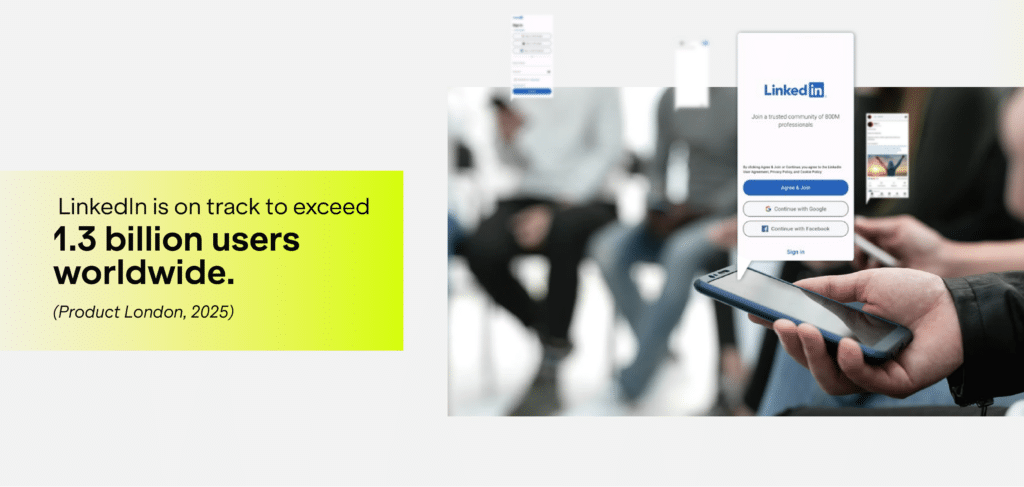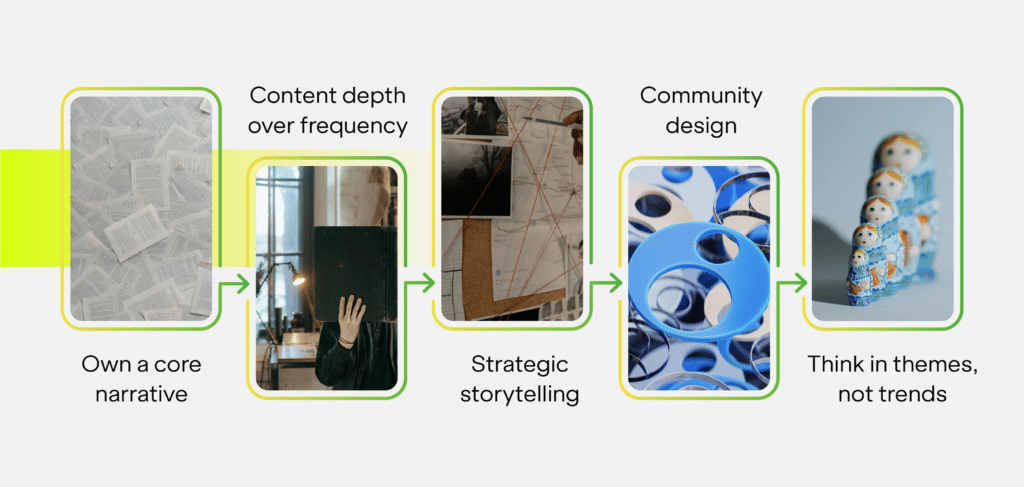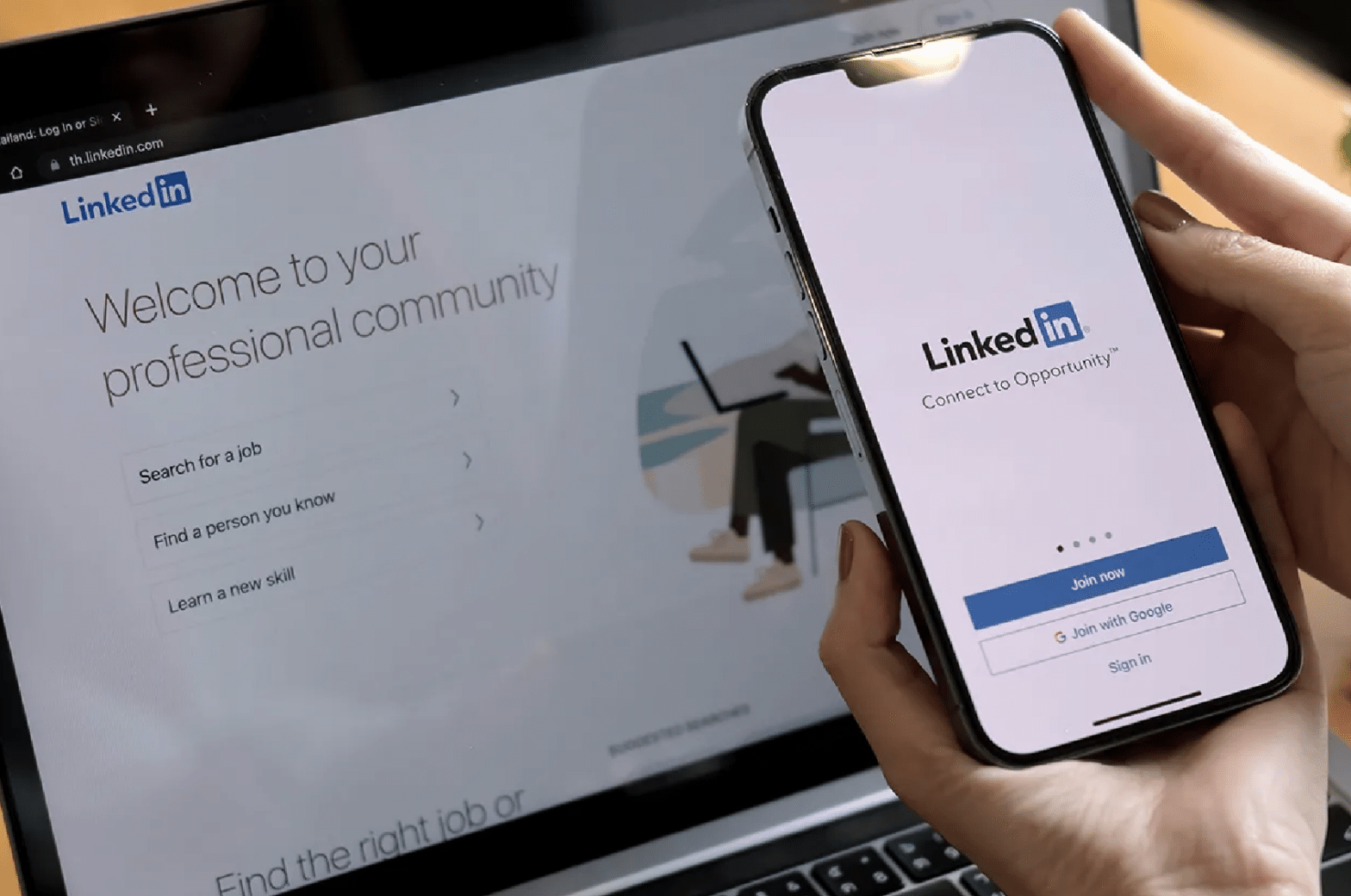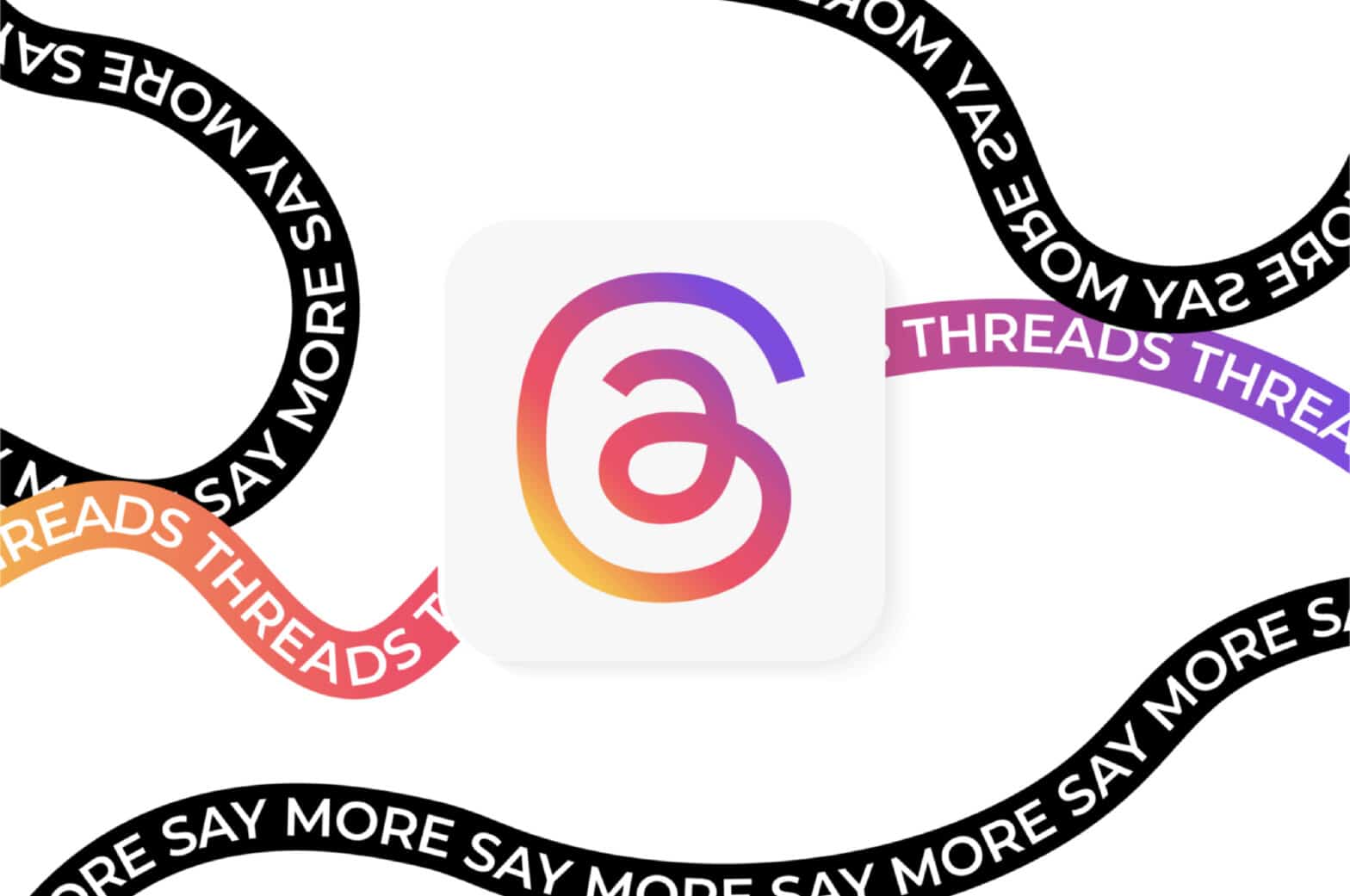As we step into 2025, LinkedIn has transcended its role as a mere professional networking site. It is now the leading stage for intellectual authority, industry influence, and business transformation. The question is no longer about whether to engage on LinkedIn — but how to build a presence that sparks thinking, challenges norms, and earns lasting relevance.
The real shift: From exposure to authority
LinkedIn’s projected 1.3 billion users signals a crowded playing field. But more noise doesn’t equal more value. The true power lies with those who guide, not just post.

While 67 million companies are active, most compete for visibility using the same playbook: reposting news, sharing achievements, or publishing surface-level takes. But this approach blends you in.
What differentiates true thought leaders? They:
- Interpret complex shifts in their industry before others notice them.
- Ask the uncomfortable questions their peers avoid.
- Offer original synthesis, not summaries of what’s already out there.
LinkedIn thought leadership isn’t about visibility — it’s about directionality. If people aren’t looking to you for what’s next, you’re not leading yet.
Thought leadership as a business imperative
Beyond personal branding, thought leadership directly impacts business success. 58% of decision-makers spend an hour or more engaging with thought leadership content weekly (Edelman, 2025), making it a prime driver for influence.

But thought leadership is not about self-promotion — it’s about offering clarity, foresight, and solutions in a world cluttered with information. In 2025, the strongest content will not just inform — it will guide.
Companies that cultivate industry-leading perspectives don’t just earn credibility — they shape demand. A well-executed strategy leads to:
- Attracting high-value clients who seek industry expertise.
- Building partnerships by showcasing credibility in your domain.
- Recruiting top talent who align with your vision and values.
- Influencing industry conversations and shaping market trends.
The real ROI? Becoming the brand others reference.
Beyond visibility: The thought leadership framework
A LinkedIn thought leadership strategy must go beyond scattered posts and occasional commentary. It should be structured around three key pillars:
- Industry insight – Rather than generic observations, offer sharp, research-backed insights that reflect emerging industry shifts and provide actionable takeaways. Ask: what do I know — or see — that others don’t yet?
- Authentic engagement – Influence is a two-way street. Foster dialogue by responding to comments, engaging in niche discussions, and being present in relevant conversations. Build relationships, not just reactions.
- Consistency with depth – A sporadic presence weakens credibility. Regularly publish well-researched content that adds new dimensions to existing debates rather than echoing common opinions. Think thematic content, not just timely updates.
Rethinking LinkedIn’s algorithm: Influence over virality
LinkedIn’s algorithm does not reward fleeting trends — it amplifies relevance and credibility. To maximize reach in 2025, professionals and businesses need to think beyond tactics and focus on strategic positioning.
Rather than chasing likes and shares, brands should ask:
- Are we driving real conversations that matter?
- Are we introducing original perspectives that others aren’t discussing?
- Are we building a reputation that extends beyond LinkedIn?
Key strategies to strengthen thought leadership
This is where strategy matters most — not just in what you post, but how you position:

1. Own a core narrative
Don’t try to speak on everything. Define the tension you want to explore — the unresolved question or overlooked belief in your industry.
Example: A cybersecurity company shouldn’t just talk about “cyber risks,” but explore “why companies are still thinking about cybersecurity like it’s 2015.”
Checklist:
- What’s your unique take on a pressing issue?
- Are you reframing familiar problems with fresh lenses?
- Can you articulate your POV in a single sentence?
2. Content depth over frequency
Posting daily won’t build credibility — posting with clarity and originality will. A weekly post that introduces a framework, decision model, or counterintuitive observation will beat daily fluff.
Use formats like:
- “3 Blindspots Most Founders Miss When Scaling”
- “A New Model for Circular Design in Retail”
- “Why This Metric Will Define Success in 2025”
Bonus tip: Anchor your posts around repeatable mental models or content series — not random hot takes. Think “Founder’s Playbook” or “What We’re Unlearning.”
3. Strategic storytelling
Storytelling isn’t just for emotional resonance — it’s a tool for clarity and positioning. Great stories teach people how to think, not just how to feel.
Structure your posts like this:
- Start with the problem no one is addressing.
- Share a personal lens or strategic insight.
- End with a provocative call to rethink or reframe.
Ask yourself:
- What tension drives this story?
- What strategic shift am I inviting the reader to consider?
4. Community design
Thought leadership isn’t about having the loudest voice — it’s about building a space where others want to listen and contribute.
Key practices:
- Join 3–5 niche conversations weekly. Leave thoughtful comments — not just reactions.
- Highlight and repost others’ smart takes. Add your perspective.
- Create rituals (e.g., “Friday Finds” or “People We’re Learning From”) to position yourself as a curator, not just a creator.
5. Think in themes, not trends
Top voices don’t chase algorithms — they create gravity. Instead of reacting to every trend, build long-term content themes that stack over time.
Examples of themes that stick:
- “What No One Tells You About [Your Industry]”
- “Behind-the-Scenes of Our Biggest Wins (and Losses)”
- “What’s Changing — and What’s Not — in [Your Field]”
Why it works:
- It builds trust through predictability.
- It helps your audience associate you with a specific lens or problem space.
- It creates a stronger body of work — one people come back to, reference, and share.
The Future of LinkedIn Thought Leadership
In 2025, thought leadership will no longer be optional — it will be the defining factor in professional and business success. The brands and individuals that rise to the top will not be those who post the most — but those who contribute the most clarity to the conversation.
Are you ready to lead the conversation rather than follow it? Ivy+Partners can help you craft a thought leadership strategy that sets you apart — not by being louder, but by being sharper.









